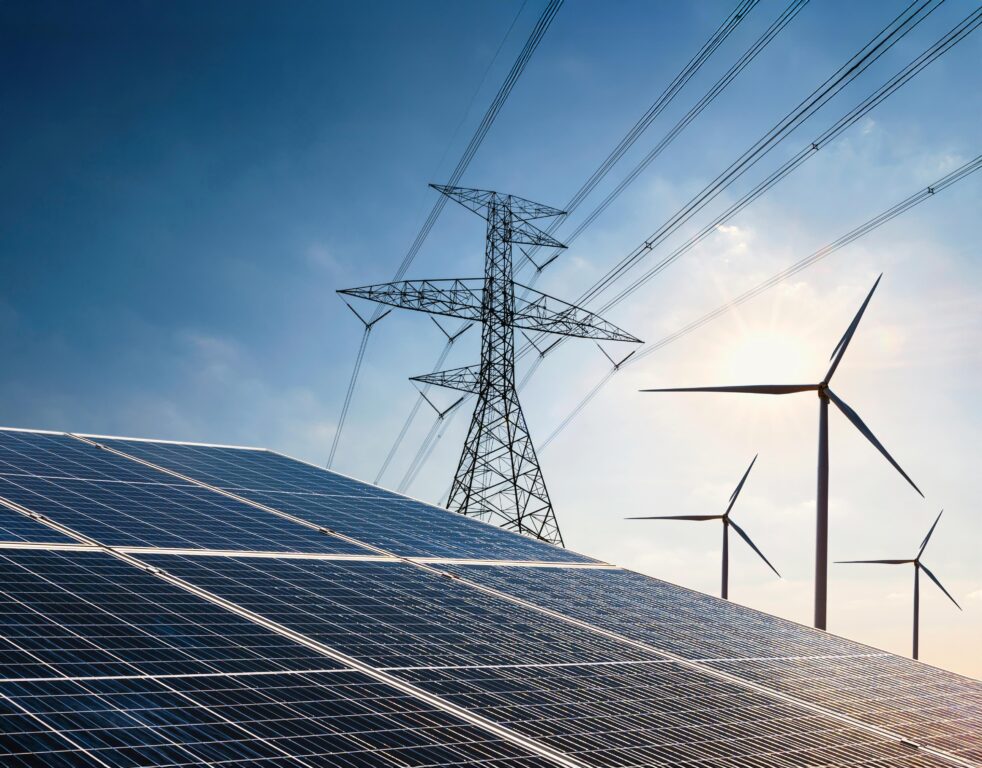Review of the draft energy policy

The Ministry of Energy and Petroleum has released its first draft of the National Energy Policy 2025-2034. This Policy seeks to replace the National Energy Policy 2018, one of the objectives of the Ministry’s National Strategic Plan 2023- 2027.
The main objective of the Policy is to provide reliable, competitive, affordable and sustainable energy to support national development and just energy transition. To attain this goal, the Policy outlines 10 specific objectives. These include promoting renewable energy, energy efficiency, conservation and trade, achieving universal electricity, supporting green industrialisation and environmental and social sustainability, and mobilising funding for energy projects, among others.
Unpacking the policy’s objectives
Universal electricity access

The Policy seeks to enhance Kenya’s vast renewable energy resources, including geothermal, solar, wind, and bioenergy into the national energy mix. The Policy recognises that adopting hybrid energy sources, including those that are renewable, will play a key role in ensuring electricity access in rural areas. The Policy is keen on partnerships to fund electricity and energy projects due to the inflated costs of installation; an example of such partnerships is the Kenya-UAE under the Comprehensive Economic Partnership Agreement (CEPA), where the UAE will have investment opportunities in energy projects. Harnessing Kenya’s renewable energy resources will enhance the country’s energy transition and ensure cost-effective universal electricity access, especially in the rural areas.
Electricity generation
The Policy observes that Kenya’s electricity generation sources are hydropower, geothermal, variable renewable (solar and wind), thermal and nuclear. While hydropower ensures a stable electricity supply, the Policy notes that this source is highly dependent on a good climate, whereas Kenya experiences prolonged dry seasons, hence reducing generation due to dried dams.
The Policy notes under geothermal power generation that Kenya ranks 6th globally and 1st in Africa in geothermal development. However, the country relies on concessional financing and with the inadequacy of funds, the Policy notes slowing down of geothermal development. It also notes the underutilisation of geothermal power during certain times of the day, leading to steam venting, which is caused by a sub-optimal energy mix in the system. To address this, the Policy proposes green financing that can be tapped to de-risk upstream development. This will harness Kenya’s geothermal potential to provide a baseload supply and enhance power stability and energy security.
Electricity distribution & retailing

The Policy observes that one of the challenges affecting the distribution of electricity, which is key for economic development and competitiveness, is the multiplicity of levies and charges, which increases end-user tariffs. In addition, it observes that KPLC is the main off-taker with purchasing power from the public and IPPs for distribution and retailing. It also notes the potential for the development of the electrical energy retail market with diverse players to promote efficiency through competition and improved services to customers. The Policy further recognises that multiple retailers would enable optimal utilisation of resources, particularly the distribution network.
Energy trade
The Policy notes that Kenya’s electricity market operates a single off-taker model, whereby KPLC solely purchases power from the generators under the PPA arrangement. To optimise on electricity trade, Kenya is reforming its electricity market from the single-off-taker model to a competitive wholesale market model. This will allow open access to transmission and distribution networks. The Policy notes that a competitive wholesale electricity market will be adopted, starting with the day-ahead market. As a member of the Eastern Africa Power Pool, Kenya stands to benefit from market access for its export and import of electricity, hence stabilising the grid.
Emerging technologies
The Policy recognises emerging technologies in the energy sector, such as green hydrogen, Internet of Things (IoT), carbon capture and advanced energy storage systems, which can enhance grid stability and diversify the energy mix. However, it notes several challenges associated with these emerging technologies, including a lack of research and awareness of them and the inflated costs associated with developing and maintaining emerging technologies. The Policy identifies the potential of government-supporting policies aligning with Kenya’s green energy ambitions and the adoption of strategic partnerships between the Government, multilateral lenders and investors in promoting innovative energy solutions.
Energy transition and energy efficiency
According to the Policy, energy efficiency and conservation is key to sustainable development and mitigating climate change. Initiatives such as promoting electric mobility in transport, efficient design in buildings, enhancing agricultural cold chains, and clean cooking are important in the energy transition. A just energy transition entails reducing dependency on fossil fuel-based energy systems to renewable and sustainable energy resources.
However, climate-friendly technologies require vast capital. In this regard, the Policy notes there exist opportunities for the Government to partner with other stakeholders in investing in infrastructure to support the adoption of low-carbon technologies. These include EV charging stations, mass clean cooking stoves and other low-carbon energy projects. Additionally, the Policy urges tapping into the vast renewable energy potential in Kenya to support the energy transition.
Cybersecurity, ICT and AI
The Policy acknowledges that the energy sector is reliant on digital systems and interconnected technologies to drive operational efficiency and innovation. It also notes the role of Artificial Intelligence (AI) in prioritising the optimisation of energy production, distribution, and consumption while ensuring grid stability, sustainability, and consumer protection.
Energy security
To guarantee energy security, there is a need to put in place adequate strategies for national energy independence to ensure firm power import contracts do not exceed 20% of the annual peak or projected demand each year. Further, the Policy notes that the Government will minimise the dispatch of thermal plants and avoid the development of non-renewable energy resources.
Implementation of the policy
The Policy appreciates the multi-sectoral approach in terms of its implementation. This approach will entail concerted efforts – including funding – from government agencies, private sector stakeholders, energy sector associations, development partners, civil society organisations and other key sector actors.
While it does not propose enacting any new legislation, the draft proposes reviewing the Energy Act 2019 and establishing various regulations to implement the National Energy Policy 2025-2034’s objectives. The Policy will be reviewed every five years.
Risk management
The Policy rightfully notes several risks associated with its implementation. Some of the risks include changes in government priorities that invalidate previous resource allocations and geo-political tensions that affect regional integration of the power market and infrastructure, among others. The policy recommends mitigation measures such as seeking alternative funding sources from development partners and developing strategic reserves for key infrastructure.
Conclusion
The Policy provides for sound policy objectives that align with global trends, such as United Nations Sustainable Development Goal 7 of ensuring access to affordable, reliable, sustainable and modern energy for all. The Policy also aligns with the global trend of Just Energy Transition that ensures the reduction of dependence on fossil fuels. However, the major imminent threat to its implementation is lack of financing where most of the energy projects identified in the Policy are capital intensive. Local and regional energy trade and strategic partnership investments in energy projects may meet such financing requirements while at the same time enhancing the necessary technical capacity.

